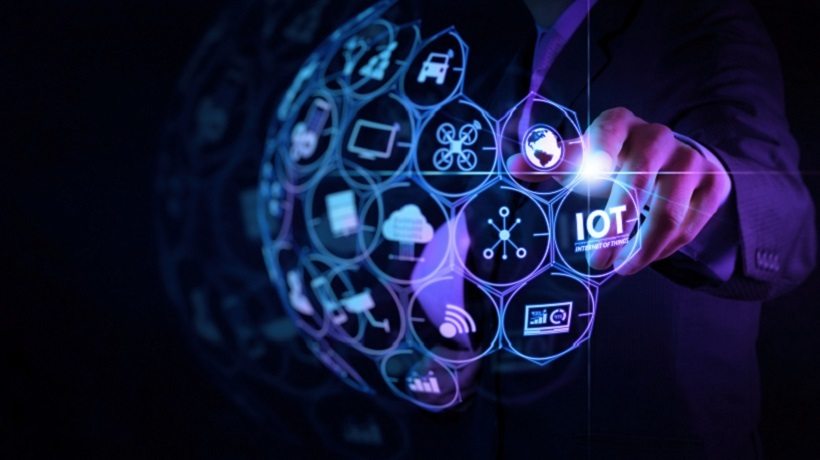The Education Industry And The Internet Of Things
It's impossible to deny that individuals choose online means of communication in science and technology. When it comes to the internet, the Internet of Things (IoT) has taken center stage. It'll soon establish a firm foundation for all of us, and our existence will completely transform. Every object will be linked to the internet in some form through this.
Education app development has made everything easier for today's generations connected to IoT. You should know many things about IoT in the education industry, and we have covered some of them for you. In this article, we have gathered our resources and written the six most important things you should know. So keep on reading.
What You Should Know About IoT In The Education Industry
Now the time has come. You must go through these fantastic six things about the Internet of Things in the education industry. This section has tried to cover all the essential things you need to know about the IoT education industry.
1. Improved Communication And Collaboration
IoT devices such as intelligent whiteboards, tablets, and laptops can facilitate real-time communication and collaboration between teachers and students, as well as between students themselves. For example, a teacher could use an intelligent whiteboard to present material to the class. Students could use their tablets to ask questions, share ideas, or collaborate on group projects. This technology can make it easier for teachers to connect with their students and for students to work together, regardless of their location. It can also help to break down geographical barriers, allowing students from different parts of the world to connect and collaborate in real time. To create software using IoT, you must hire mobile application development services.
2. Personalized Learning
With IoT devices, teachers and administrators can collect data about a student's learning style, progress, and areas of difficulty. This information can be used to create customized lesson plans and learning experiences tailored to each student's individual needs. For example, a student struggling with a particular concept might be provided with additional resources and support to help them better understand the material. On the other hand, a student who is excelling in a subject might be challenged with more advanced content to help them continue to grow and develop. Overall, personalized learning can help ensure that each student receives the support and guidance they need to succeed in their studies. It can also help to engage and motivate students by providing them with learning experiences that are relevant and meaningful to their needs and interests.
3. Enhanced Classroom Engagement
With IoT devices, such as interactive whiteboards and tablets, teachers can create more engaging and interactive lessons that keep students interested and motivated. For example, a teacher might use an interactive whiteboard to present multimedia content, such as videos and graphics, to help illustrate a concept. Students can then use tablets or other devices to respond to questions, participate in discussions, or complete interactive activities related to the lesson. eLearning solutions with IoT technologies can also facilitate collaboration and communication between students, allowing them to collaborate on projects and share ideas and resources in real time. It can help create a more dynamic and engaging learning environment conducive to active learning and problem-solving. Overall, using IoT technologies in the classroom can help increase student engagement and participation, leading to better learning outcomes and a more positive learning experience.
4. Improved Resource Management
With IoT systems, teachers and administrators can more efficiently monitor and manage classroom resources, such as textbooks and materials. For example, an IoT school management solution can track the use and availability of books and other materials, alerting teachers when supplies need replenishment. It can help ensure that students have the resources they need to succeed and can reduce waste by eliminating the need for unnecessary duplication of materials. In addition, IoT technologies can monitor and manage school facilities and equipment, such as classrooms, laboratories, and athletic facilities. It can help optimize these resources' use and ensure they are efficient and effective. Overall, using IoT systems in the education industry can help improve resource management, leading to cost savings and more efficient and effective use of resources.
5. Enhanced Safety And Security
With IoT devices, schools can monitor and secure their buildings, grounds, and buses, helping to ensure the safety and well-being of students and staff. For example, IoT-enabled security cameras can monitor school grounds and buildings, alerting authorities to potential threats or suspicious activity. Similarly, IoT-enabled GPS tracking systems can monitor the location and movement of school buses, helping to ensure the safety of students as they travel to and from school. IoT technologies can also monitor and control access to school buildings, using smart locks and other security systems to restrict access to authorized personnel only. As a result, it can help to prevent unauthorized access and protect against potential threats. Overall, using IoT technologies in the education industry can help enhance safety and security, providing schools with the tools they need to protect their students and staff.
6. Increased Efficiency
With IoT systems, teachers and administrators can streamline many administrative tasks that take up their time, such as attendance tracking and grading. It can free up more time for teaching and learning and allow educators to focus on the core functions of their job. For example, an IoT system to automate attendance tracking eliminates teachers' need to take attendance every day manually. Similarly, an IoT system to grade assignments and exams reduces the time and effort required to provide feedback to students. IoT technologies can automate other administrative tasks, such as scheduling and communication. It can help improve the education system's overall efficiency by reducing the time and effort required to complete routine tasks. Overall, using IoT systems in the education industry can help increase efficiency, allowing educators to focus on teaching and learning and providing students with a more effective and efficient learning experience.
Takeaway
Hopefully, you liked this article and now know IoT's role and benefits in the education industry. We tried to cover almost everything that you must know about it. So if you're interested in learning more about the Internet of Things to create innovative software, you must hire an IoT development company.








